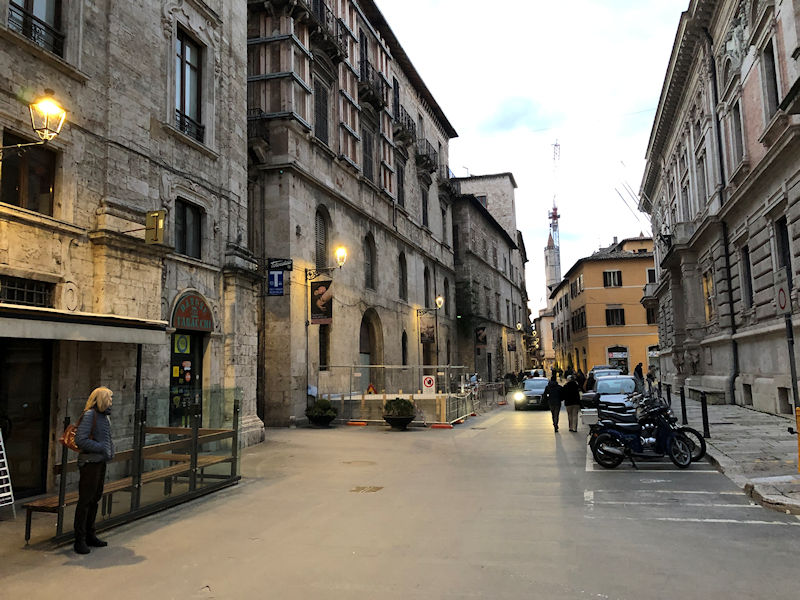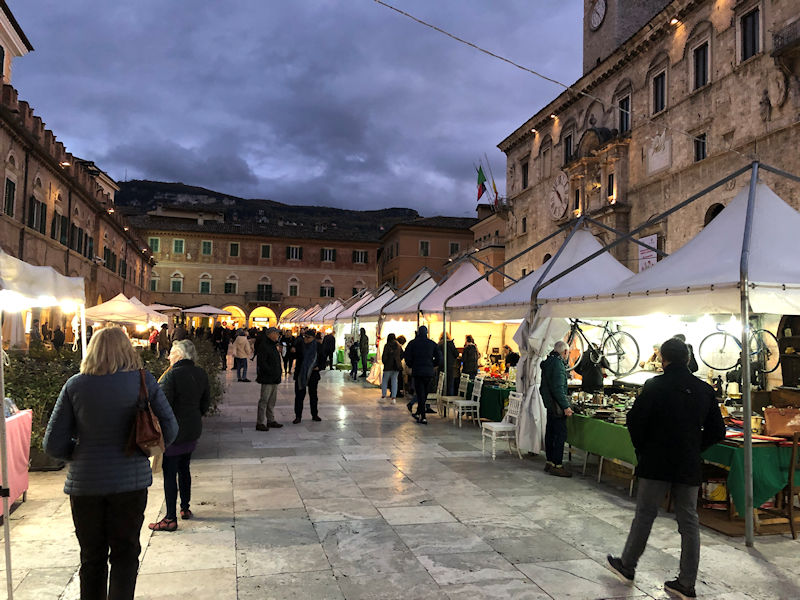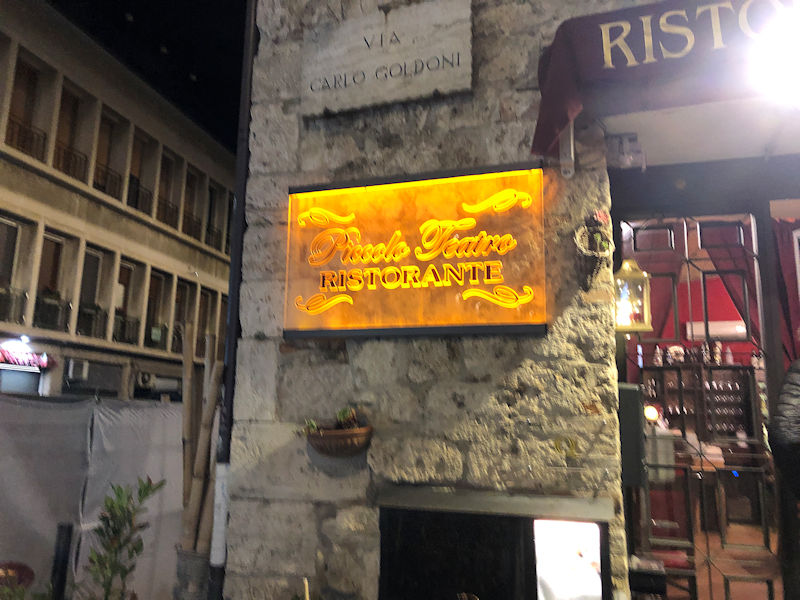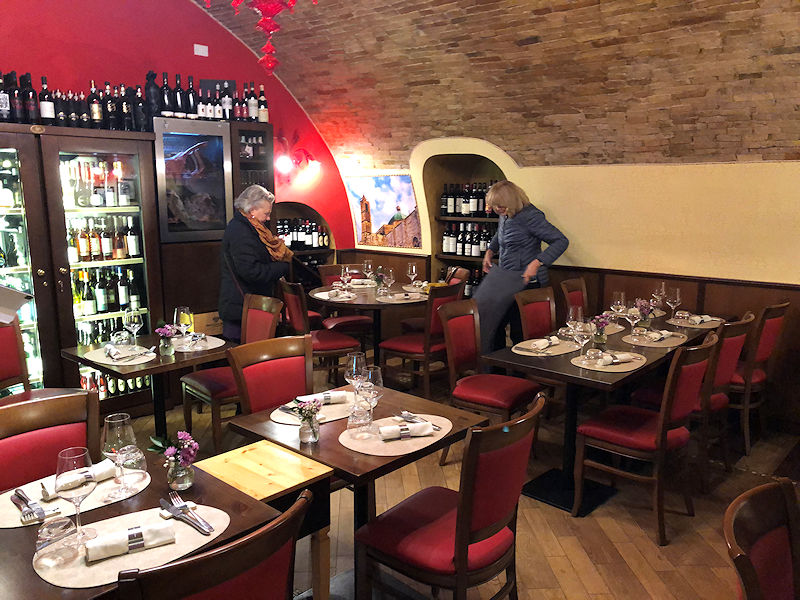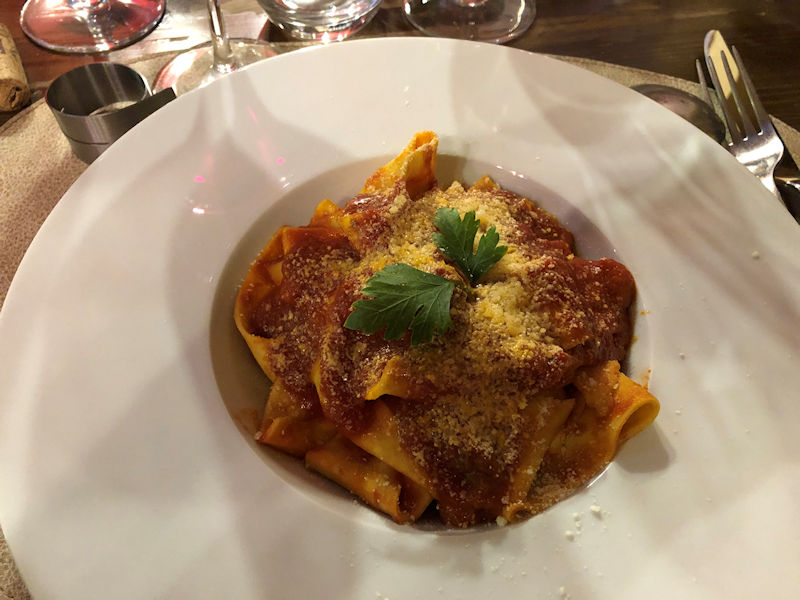You may not find this terribly rewarding unless you're included here, so this is a good time for casual and random browsers to turn back before they get too caught up in the sweep and majesty of the proceedings and can't let go.
We're not based in Europe anymore, and we've struggled through the covid-19 lockdowns like everyone else, so we haven't set foot in Italy since February 2019. Now we're making up for lost time with mad sightseeing, but missing the cats even more sorely as the days fly by.
Ascoli Piceno and the Forte Malatesta
We've just been visiting some of the local villages yesterday, and soon will go after some more, but today we're hanging out in Ascoli and saving a little time for the Malatesta castle at the edge of town (20 November 2022).

We're beginning our day (at 11 a.m.) with a recital by a young pianist, part of the city's Music on Sunday series here in the Foyer room of the Teatro Ventido Basso, just across from the St Francis cloister.
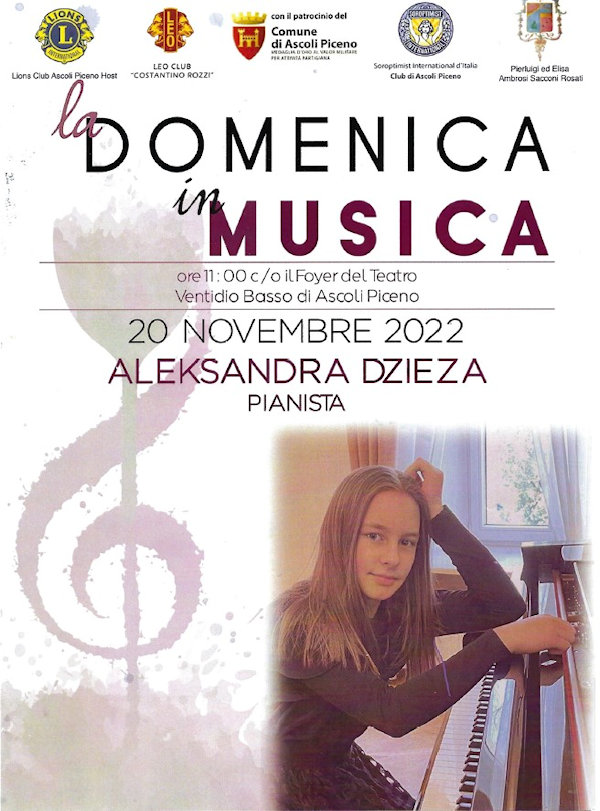
Aleksandra Dzieza is only 11 years old evidently, but with a long list of competition prizes over the past year. Her J. S. Bach and Chopin selections were very well done, though the two pieces by 20th century composers with significantly Polish names went right past me.

We're milling about on the Via del Trivio in front of the theatre there on the right; one of our party went astray on the way out and got stuck in the otherwise empty building for a while.

If you've got to mill about waiting for someone, there can't be many better places to do it.

The monthly weekend Antiques Market is proceeding nicely, and the rain is more or less holding off.

I don't care too much about antiques, but I'd love to get hold of a sandwich like that guy's got going for him.

The Palazzo dei Capitani, with a quick look from which we learn three things: it's already gone noon, that's okay; from the white banner we discover that today is the Giornata Internazionale Infanzia e Adolescenza (for which we hadn't really prepared ourselves); and that at some point (in 1549, in fact) somebody convinced the town to include a sedentary statue of that nasty old nepotist Pope Paul III Farnese (assuming that he didn't just order them to do it under threat of excommunication).
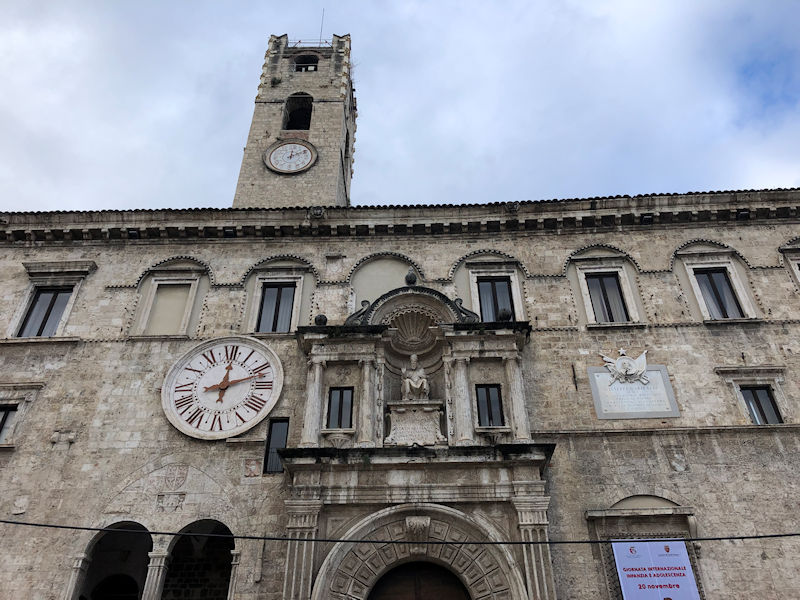
There he is, the old dynast, watching down at us and sneering.
But the Universal Wag has got him back: the white plaque to the right of the pope, with the crossed flags on it, says (in translation): 'Giuseppe Garibaldi from here on the 25th January 1849 spoke to the people moving them to the war against the Austrian and Papal dominion'.

The Caffè Meletti, a better view of it than we got the other day. In 1903, Silvio Miletti, owner of a liqueur factory, bought the former post office, enlarged and reconfigured it entirely, and opened it as an elegant cafè in 1907. It closed in 1990 but was purchased by the Foundation of the Ascoli Savings Bank, restored and then reopened in 1998, virtually as a landmark of the city.

At this point, one of our party is determined to explore the part of town called the Piazzarola, up the Via Pretoriana here, beginning where the old Roman 'cardo' ends in the Piazza Roma. It runs up the little hill here and (we've been informed) boasts an amazing array of medieval, Renaissance, and Baroque era buildings.
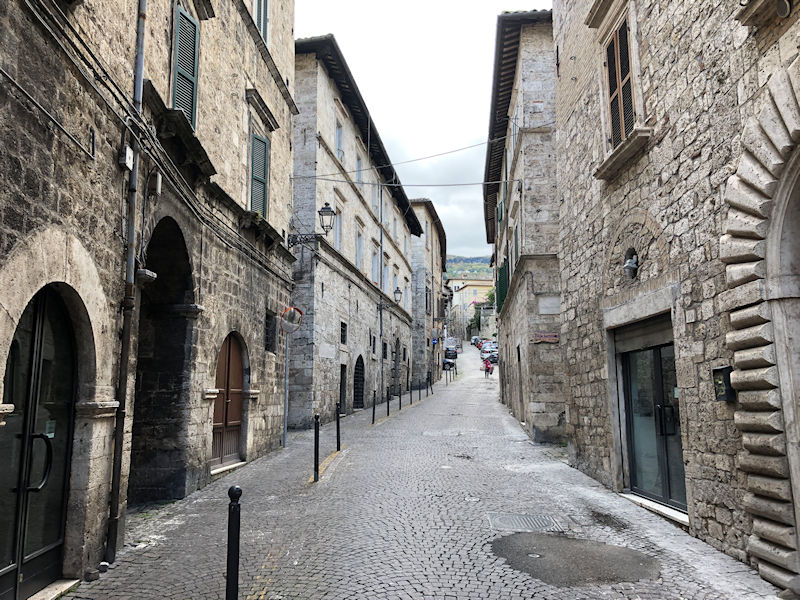
The Via Pretoriana

A palazzo on the corner of Pretoriana and the Via delle Maioliche (majolica) leading up to the left

The view back down the Via Pretoriana into the city

A side street with church tower
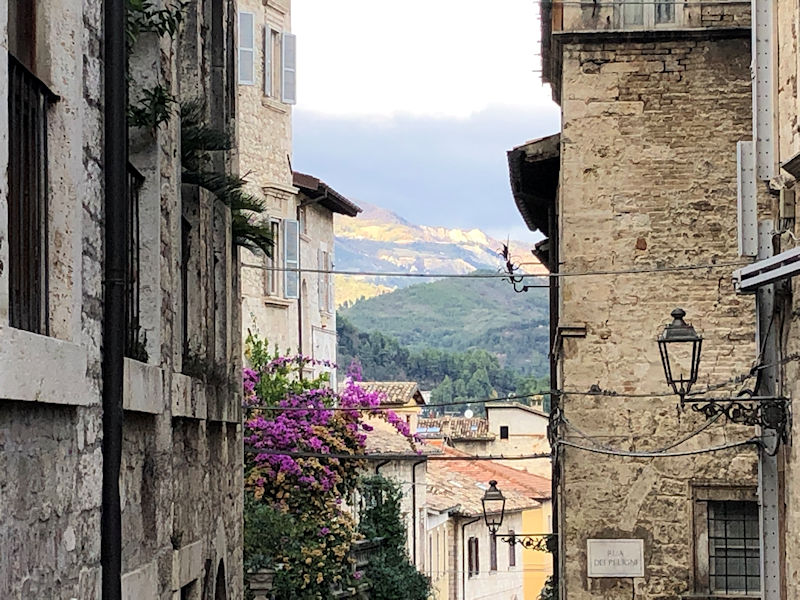
Looking back down again, from near the top of the street

Street art in an underpass before the road drops down towards the Lungo Castellano Sisto V ring road overlooking the Castellano river

Striding along the Via Catone above the centre city, we get the classic view over the Palazzo dei Capitani and the dome and towers of St Francis, and . . .
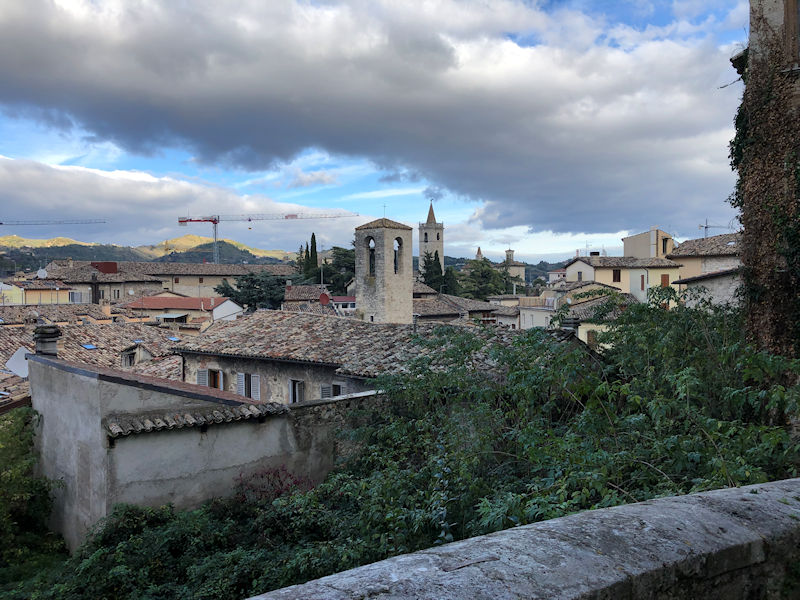
. . . looking just to the east, in the foreground is the belltower of the Chiesa di San Gregorio Magno, which is . . .
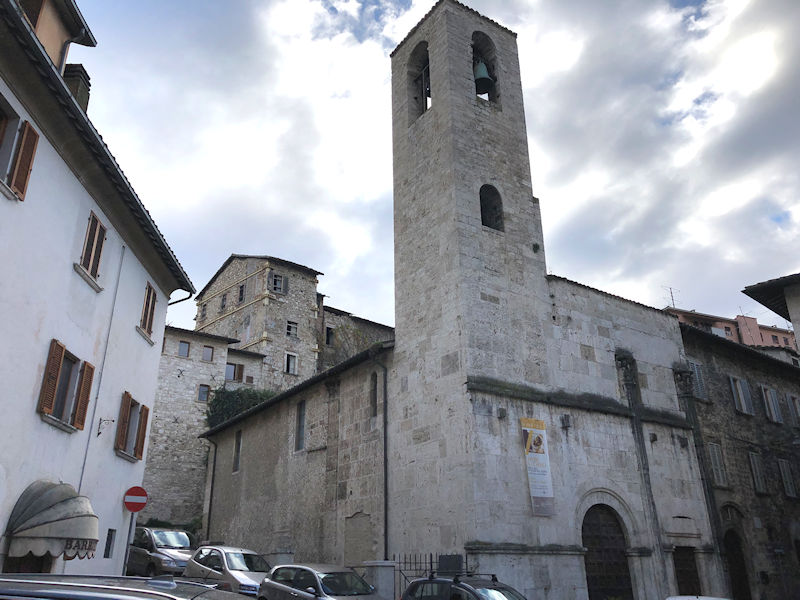
. . . this one. Just 100 metres up from the Piazza Arringo, this is the church of San Gregorio Magno, which was built in the 13th century over the remains of a 1st century BC/early Augustan pagan temple, reusing much of the original building materials. It was dedicated to Pope Gregory I (540-604), who had a special interest in converting pagan temples into Christian churches. Renovations took place in the 18th century, but in further work in the late 1930s efforts were made to restore the original Romanesque style. The present belltower was added in the 14th century to replace an earlier one.

The smaller of the front doors is sitting between Corinthian columns still in place from the original temple.
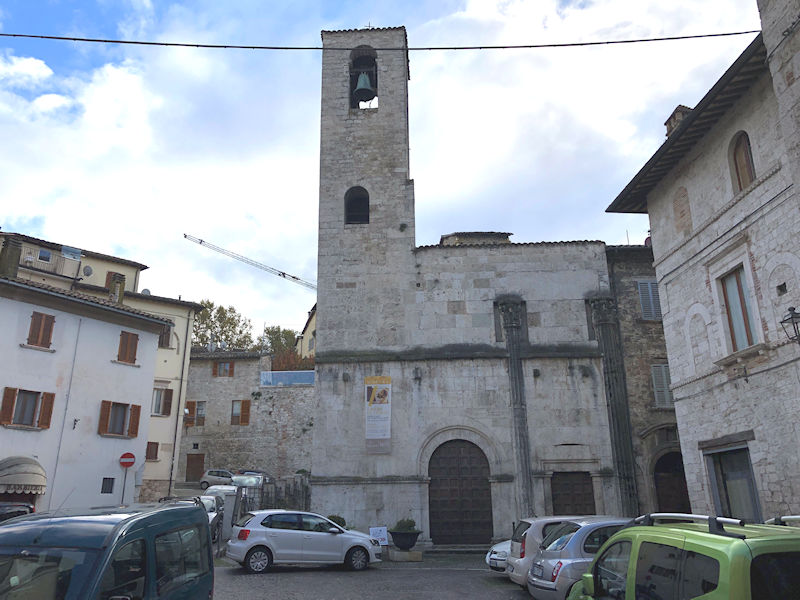
According to the banner hanging off the front of it, there are works in progress on the place even now.

We're back down to the antiques market overflowing into the cathedral piazza, and our party is reunited for a march eastward to visit the Malatesta fortress.

Just behind the cathedral and its baptistry, we've picked up the Corso Vittore Emanuele towards the east end of the Centro Storico.

Just 300m farther on, we near the Chiesa di Santa Maria del Carmine, where the Corso Mazzini main street bends round and joins the Vittore Emanuele at the Ponte Maggiore, built with the adjoining convent of the Carmelite Fathers and completed in 1663.
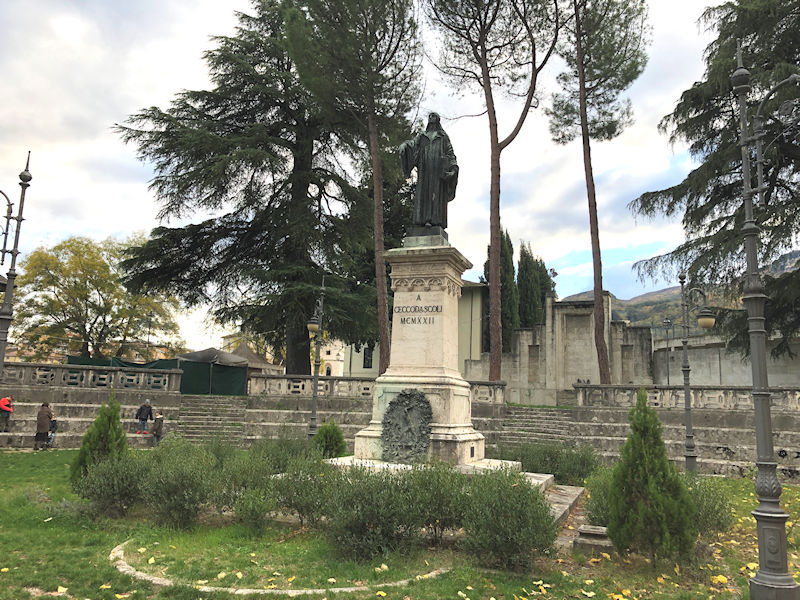
Across the street from the church is a little park with the 1919 statue of Cecco d'Ascoli, the mathematician, philosopher, astrologist, author, and general gadfly to the papal authorities; he was born near Ascoli probably in 1269 and burnt at the stake in Florence by the Inquisition for heresy in 1327. Behind him, on the right, are the walls of the Campio Squarcia, a sports stadium built in 1925, later named for a local footballer who died in the Spanish Civil War, at the time the home of the local football (soccer) team until 1969, but recently restored and still the site of the festive annual competitions of the Quintana 'knightly tournament' among the six quarters (sestieri) of the town.

There's the Forte Malatesta, guarding the old eastern entrance to the city.

The castle was built in 1349 by Galeotto I Malatesta (1299-1385), a hyperactive condottiero, or mercenary commander, son of Pandolfo I Malatesta, the Lord of Rimini amongst a collection of utterly faithless but occasionally successful Malatestas.
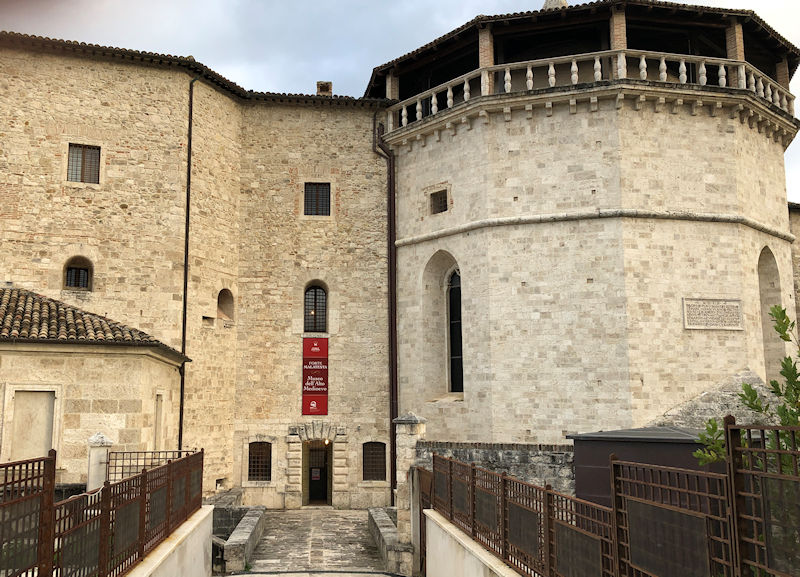
Galeotto had been hired by Ascoli as its military leader in its war against Fermo but stayed on as the city's tyrant, with the Forte as his stronghold -- though he was expelled not long after, he enjoyed a further four decades leading everybody's armies against everybody else, eventually Lord of Rimini himself and all of the family's seigniory in Romagna. His four sons carried on in the same grand tradition.
(By the way, Galeotto means 'convict' in Italian, and Malatesta means 'bad head'. Just sayin'.)
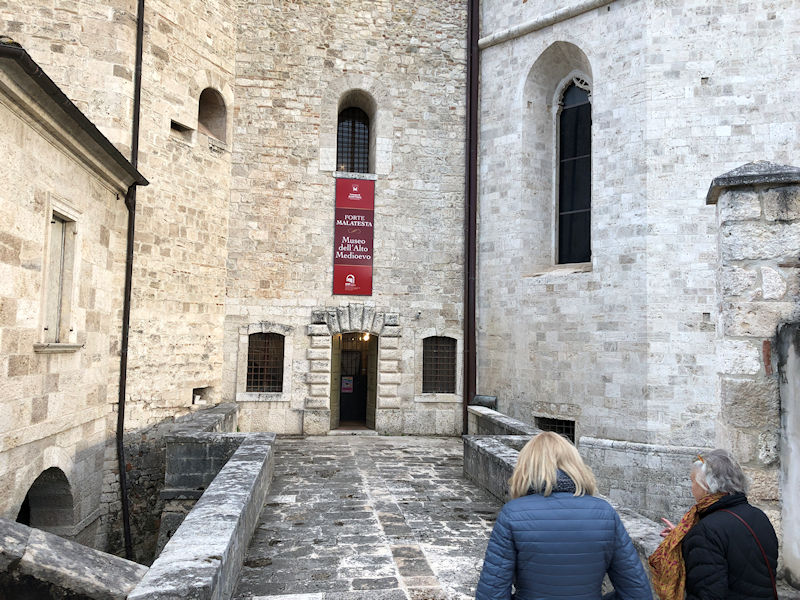
The Forte was ransacked several times in the later 14th century and was in ruins by the early 1500s, when a small church, the Santa Maria del Lago, was built in part of the remains. In 1563, however, Pope Paul III Farnese sent one of the chief architects of the era, Antonio da Sangallo the Younger (1484-1546), to build a more impressive fortification on the site, incorporating the church.

What had once been a moat, perhaps, now a contemporary art exhibit

The fort saw some further alterations over time and in the 20th century was refurbished for use as a prison, but beginning in 1978 major renovations were made and it was opened in 2010 with many interior spaces for temporary exhibitions. By 2014 part of the fort was also hosting the Museo dell'Alto Medioevo, the Museum of the Early Middle Ages.

Comparing notes

Contemporary art exhibits, too, including many pieces by local artists

We thought that this round room in the basement had been a cistern or something, but were told that column is meant to be holding up the whole building, more or less. In any case, it's sparsely furnished with more of the contemporary art.

The Museum is extremely well done and features sophisticated information panels in Italian and English.
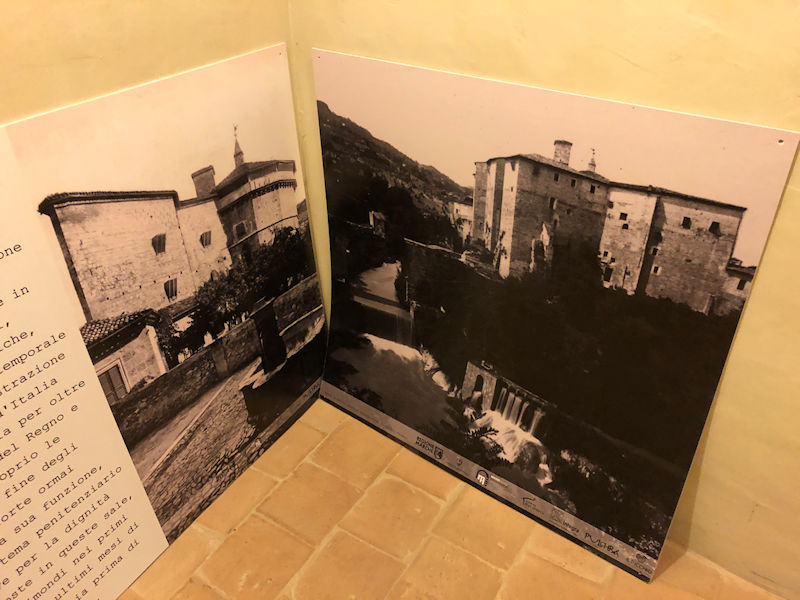
The Forte during its prison days
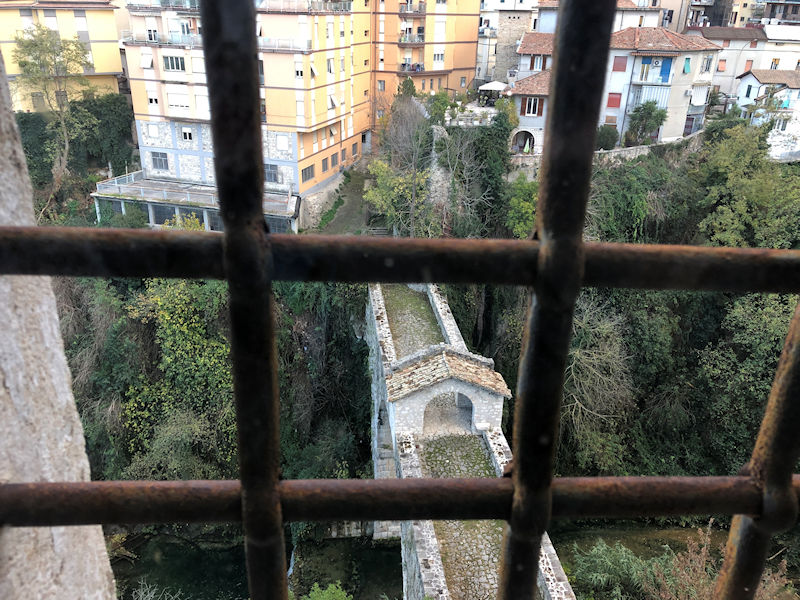
That's the original two-arched bridge built over the Castellano river by the Romans in the early 1st century AD; it was destroyed in 1944 by the retreating Germans, but was rebuilt in 1971 from the original materials. It's also called the 'Ponte di Cecco' from a legend that it was built in the Middle Ages in a single night after the astrologer Cecco made a bargain with the devil.

And that's the present Ponte Maggiore across the Castellano river, built in 1946 on what was left of the original bridge from 1373 after the Germans blew that up, too, when retreating in 1944.
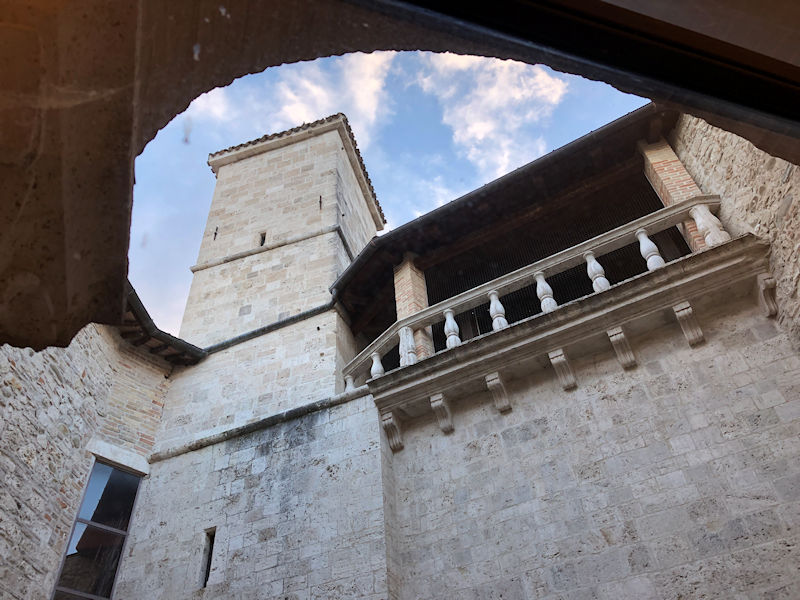
Looking up from the central courtyard

The primary bastion, facing into the town

All very well done
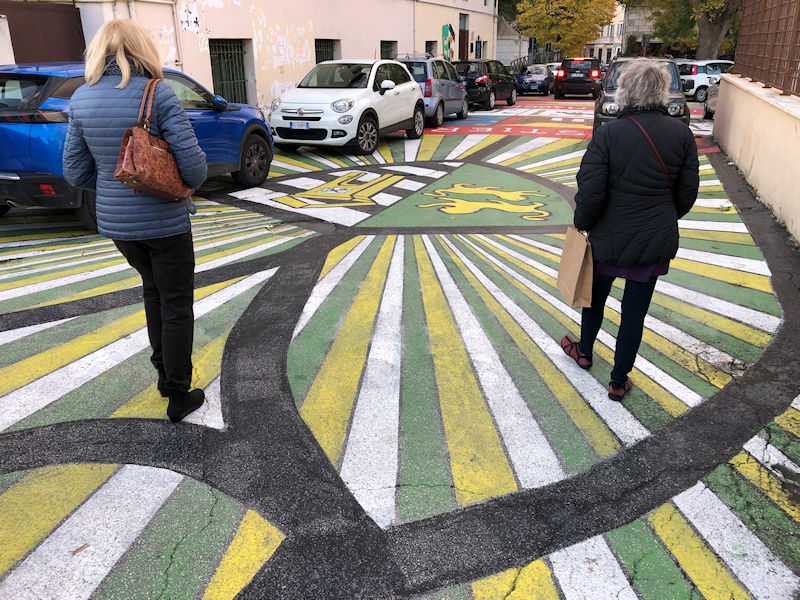
The decorated pavement just outside the Forte, with . . .
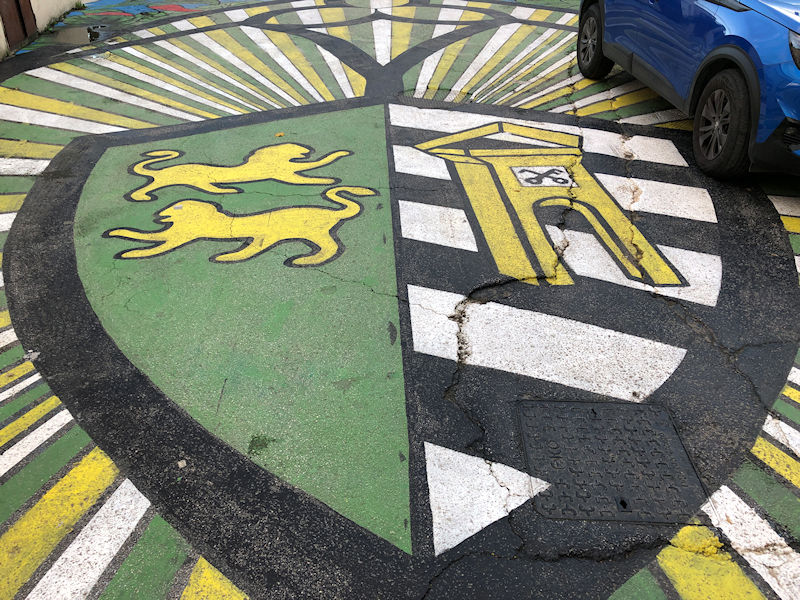
. . . the coat of arms of the Ponte Maggiore Sestiere or district of the city, one of the six

Forming up our party again, including the stragglers, for further adventures
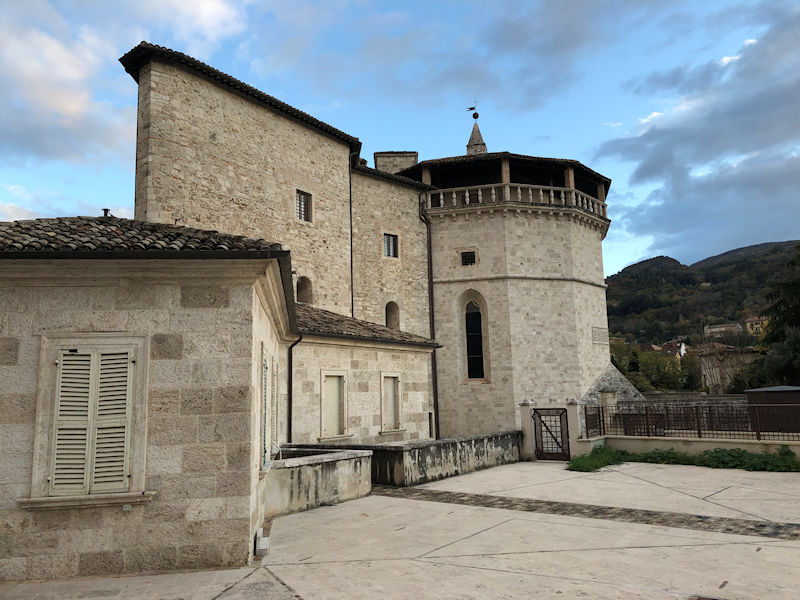
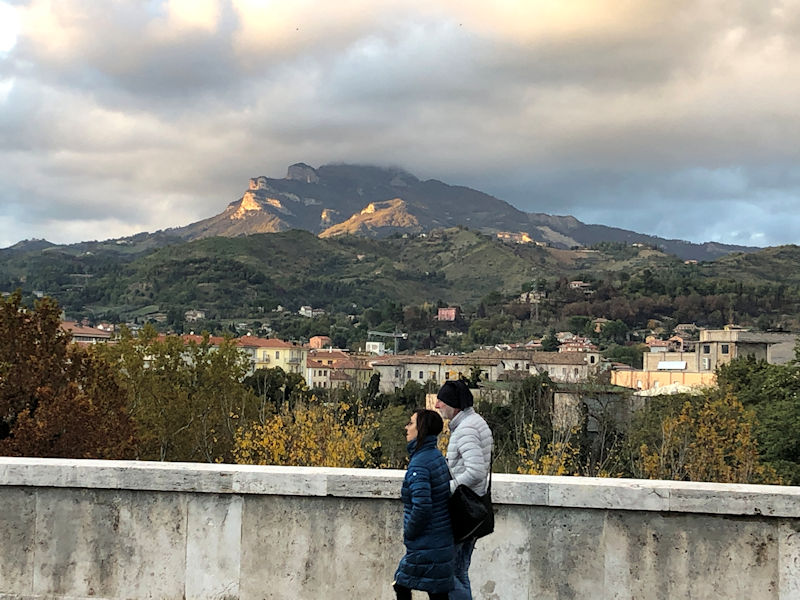
The view to the north from the Ponte Maggiore

The Malatesta Fortress from the Ponte Maggiore

The Roman Bridge over the Castellano Torrent

We're taking a circuitous route back downtown, along the Corso Mazzini
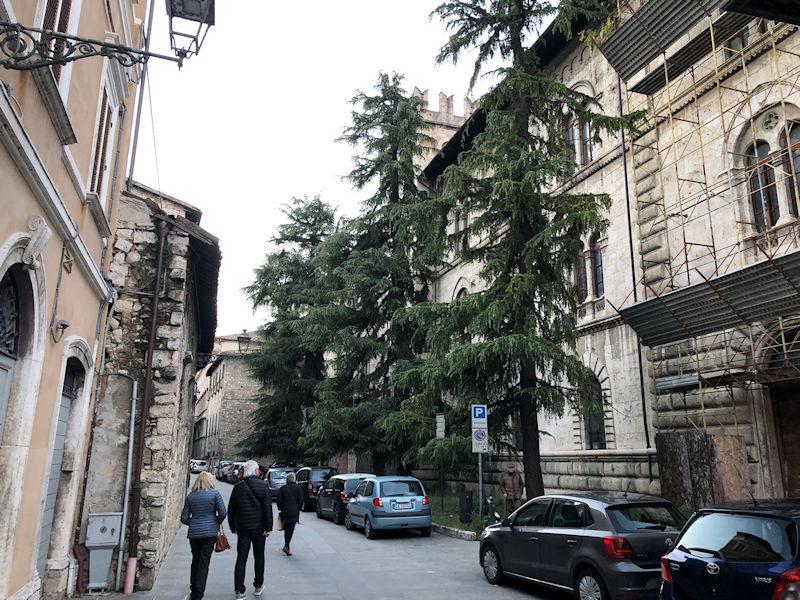
We haven't been able to learn the identity of that treed-up palazzo under renovation -- we wrote it down at the time, but lost the scrap of paper it was on.

In any case, it ought to be very nice when it's finished.
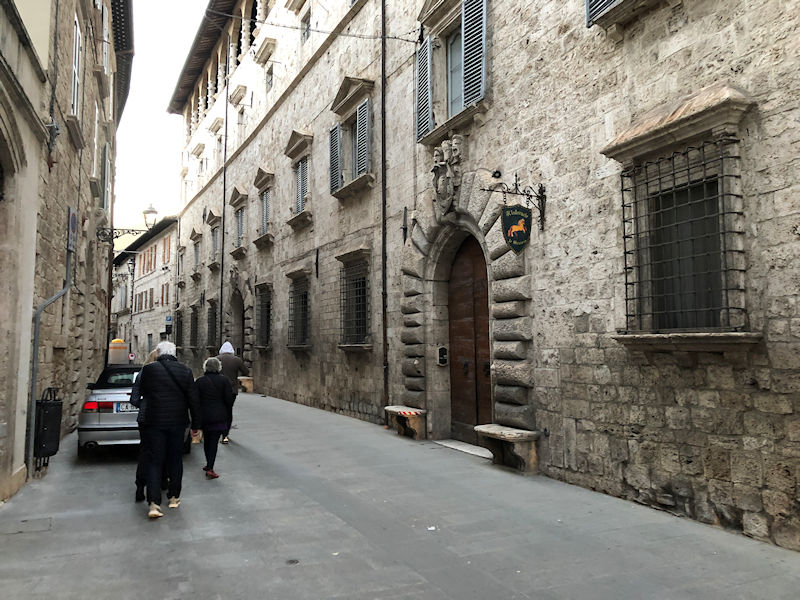
That's the enormous 16th century Palazzo Malaspina, built by joining together a number of 14th century buildings; we're passing on this end the embedded Ristorante le Scuderie, highly rated on the Internet but described by Google as 'permanently closed'.

The two main portals of the Palazzo Malaspina, of which this is one, sport, not only the cute little grotesque 'mascarons' for warding off devils, the coats of arms of the Malaspina and Guiderocchi families, once evidently closely linked.
 Dwight Peck's personal website
Dwight Peck's personal website
























































